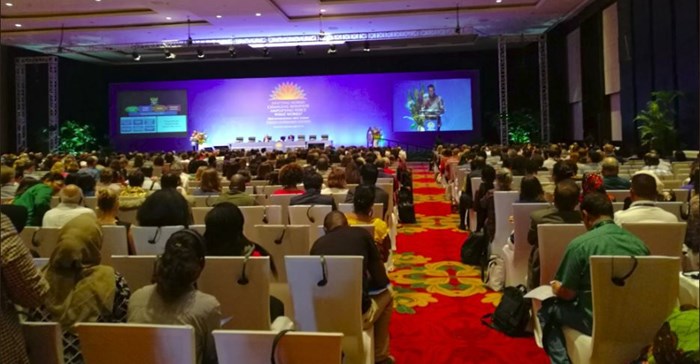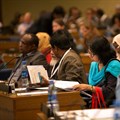How storytelling rocked behaviour change in Bali

The panel included a campaign that uses hip hop to rap the news in Uganda, a community radio series addressing malnutrition in Guatemala and an Indian rural participant-driven video series providing communities with journalistic skills. Our mining soapie series, Makarapa City, developed with Ogilvy PR, was right up there with the best of them. We heard over and over about the efficacy of storyarc and storylines, the resonance of mother tongue, serialised programming, embedding brand values into the plot and using characters as heroes and anti-heroes to underscore those messages.
Multicultural, global take on the world
The theme of the conference was 'What Works? Shifting Norms, Changing Behaviours, Amplifying Voice' and was attended by over 1200 people from more than 90 countries. Almost everyone I met had a multicultural or global take on the world and their work; a half-Spanish, half-Scottish consultant working in Indonesia, a Kenyan located in Ethiopia doing great things for nutrition; a Brit married to a Nepalese committed to eradicating underage marriages in Kathmandu; a heady mix of professionals in health, behaviour change and entertainment education (EE) – into which our work would be categorised. If only we knew there was such a category.
The BBC has a dedicated development arm showing how broadcast media are also reaching out across the globe for meaningful, life-changing programming. Engaging digital media in the quest for behaviour change was also a major theme. Transmedia storytelling involves creating content that engages an audience using various techniques to permeate (people’s) daily lives… so say R. Pratten and N. Bernado, presenting a panel entitled ‘Transmedia to transdigital age’.
Content by the community for the community
Community and national mother tongue radio is used around the world to communicate with our diverse target markets. Engagement with digital platforms has been found to extend and deepen the narrative. The role of personal stories in amplifying voice could not be emphasised strongly enough. Videos created by the community for the community have had significant results in behaviour change programmes from India to Indonesia.
Meeting the South Africans was the greatest trip of all. Soul City and the Centre for Communication Impact (CCI) were there in force, as were TBWA and Joe Public, presenting their wares to the development community. TBWA’s Graham Cruikshank shared the agency’s disruption roadmap model, a glyph we’ve been party to for more than two decades. Ben Shapiro from Joe Public facilitated a jam-packed, strategic skills building workshop and Lusanda Mahlasela from the CCI presented a watertight case study on the Power and Inspiration of EE.
Effective storytelling
Lillian Dube’s keynote speech had delegates rolling in the aisles as she regaled them with her personal journey on screen and in real life. These presentations showed that the principles of effective storytelling are employed across the communication spectrum to solicit and maintain behaviour change. The granddaddy of EE, Miguel Sabido, who practically invented the edutainment telenovela, was presented with a Lifetime Award at the gala dinner of the conference. Once again, his principles of drama, methodology and mythology struck a familiar chord. We’re resonating with the world. And it’s working.
We were spoiled for choice; experts abounded in the fields of maternal mortality, modern slavery, malaria, violence against women and girls, family planning, handwashing, nutrition and basic health. I discovered, time and again, that the principles of storytelling are utilised across the SBCC and EE sectors, using consumer-generated narratives and employing a vast array of classic storytelling techniques, adapted for cultural resonance and relevance.
Beyond the 30 second spot
The notion of storytelling was everywhere, proving the efficacy of what could be termed branded content, content marketing, cause marketing, EE, moving beyond the 30 second spot, presenting edutainment as programming, synergising emotional and functional brand values, building brand love, destination listening and behaviour change, into the minds and hearts of a plethora of global and local target markets.
The conference will shortly issue a Summit Declaration within which SBCC principles will be made available to the public. All told, it was a fascinating and enlightening experience and one which I look forward to attending in two years wherever in the world it will be held.








































